by Beth
Seven winters ago, on a misty December solstice, we closed on acreage in east Tennessee. After signing a stack of papers, we drove 10 minutes out of town, down progressively smaller roads, up a single-track gravel road, and parked in front of the thicket of vines and bramble that was now our responsibility. Our goal was to make this acreage into a comfortable place to live and raise food, and to build a big dome home with a mountain view, where everyone could gather.

Standing in that long, slow twilight, we hardly knew where to start, or what the land looked like under the kudzu. We just knew we liked the place, with its acres of hidden pasture on the side of a quiet mountain, a creek full of salamanders and crawdads, good cell service, and a big view of the national park. We also liked the neighbors, and the seller had agreed to a price that left enough in our budget to make this land human habitable for the first time in a century. Hopefully.

We figured it out as we went. That winter, we chainsawed dead trees off the driveway and fields. We bought an old pickup off Craigslist to haul gravel and equipment. We gathered quotes from contractors to grade the driveway. In spring, we mowed kudzu. Chris built the first shelter, a hunting blind, and began rehabbing our 4 acres of fields so they’d be walkable again. After months of research, we got a tractor. We worked with the utilities company through the summer to approve a route for power poles, an intricate process.

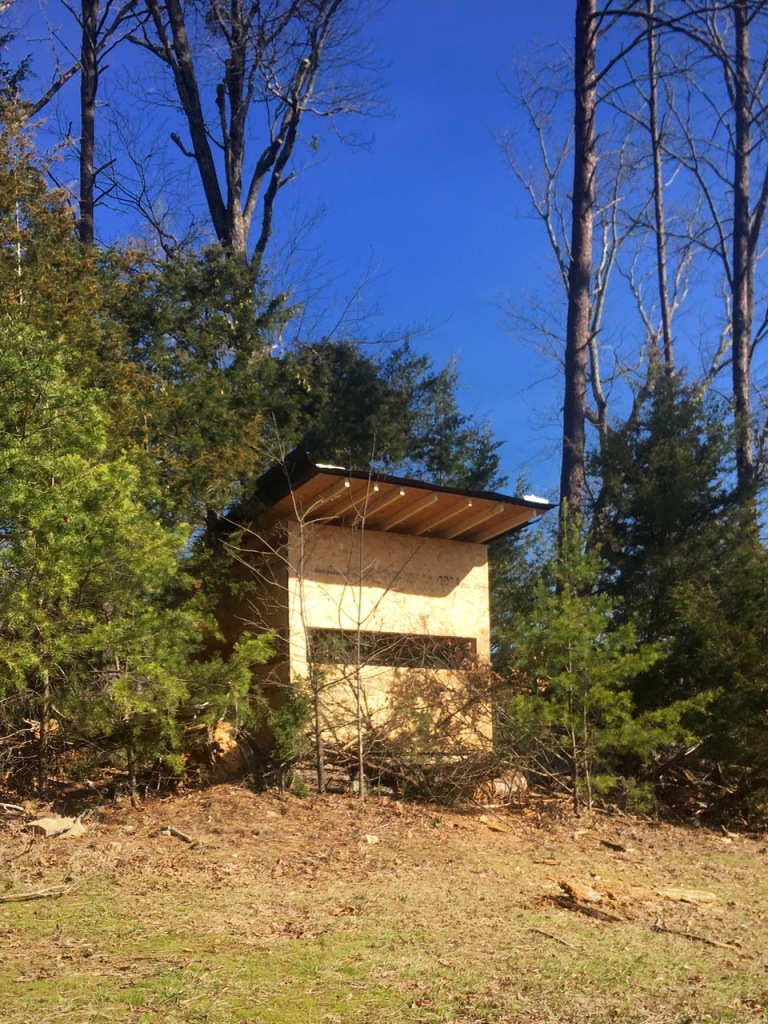
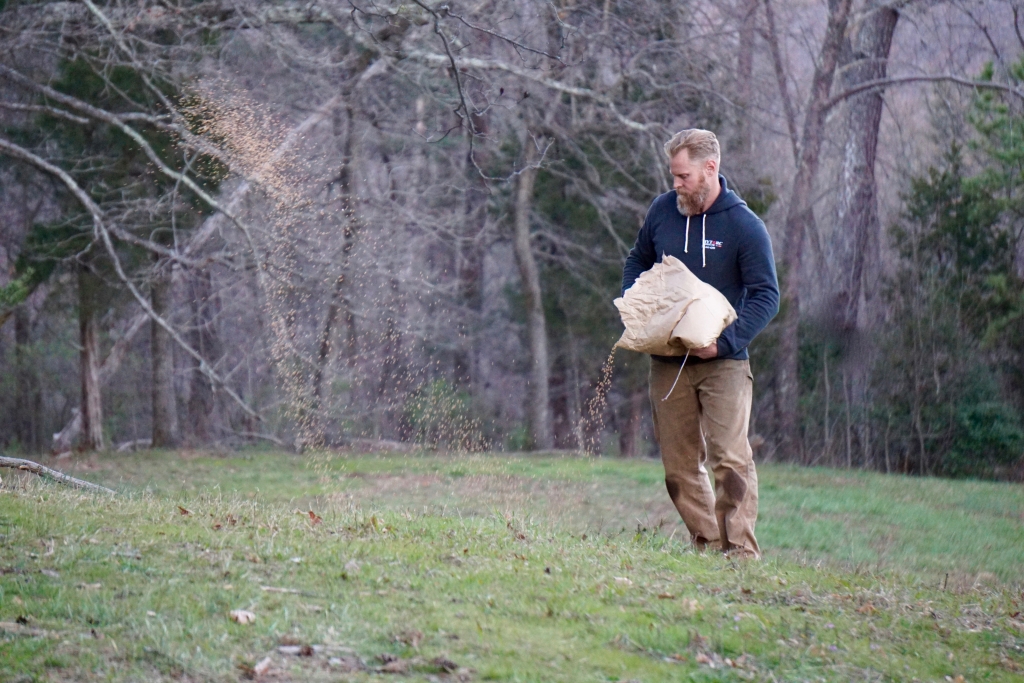

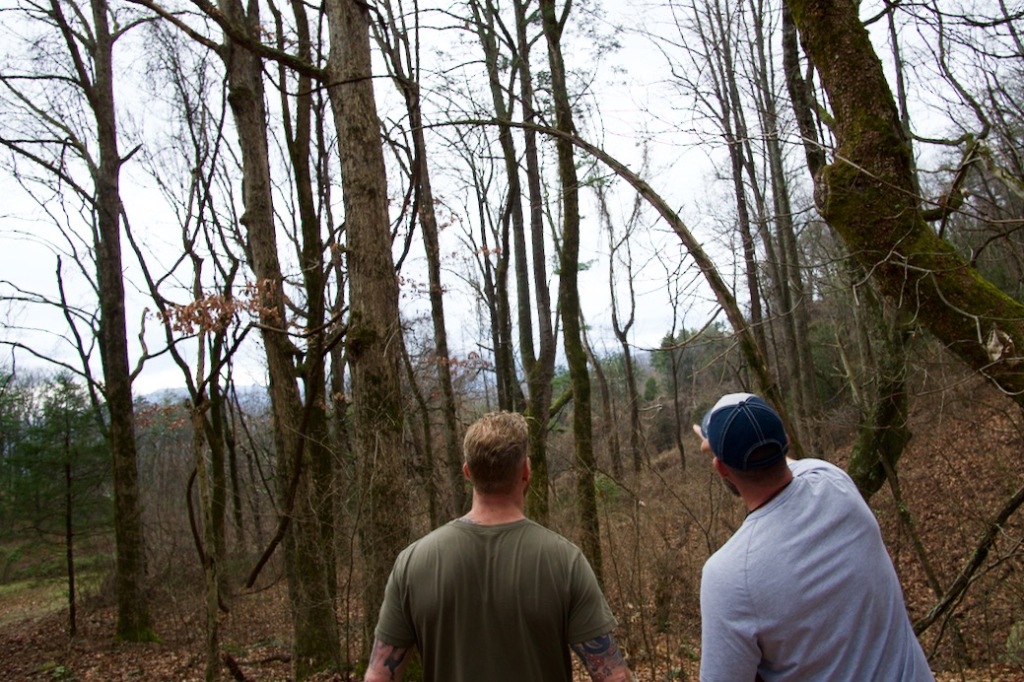

Progress was at the mercy of the Mother Nature, and it was easy to think she had it out for us. We both got heat exhaustion during an unseasonably hot weekend that first May, which screwed up our internal temperature regulation for a year, adding another level of challenge to working outdoors. I developed a new sensitivity to poison ivy. Yellowjackets seemed to be targeting one of Chris’ legs; he spent late summer with a balloon for a calf.
We muddled through. By fall, we had power poles and an all-weather driveway fit for everything from a golf cart to a well-drilling truck. Our dome shell was delivered after months of tedious planning with the dome-kit vendor and several hurricane delays. We had a metal polebarn built by a skilled crew who would make the long drive to our county to help us complete countless projects over the years. Our relationship with that crew was important not only because of the quality of their work but because hiring skilled professionals was often harder than we expected, thanks to how remote and rugged our place is.
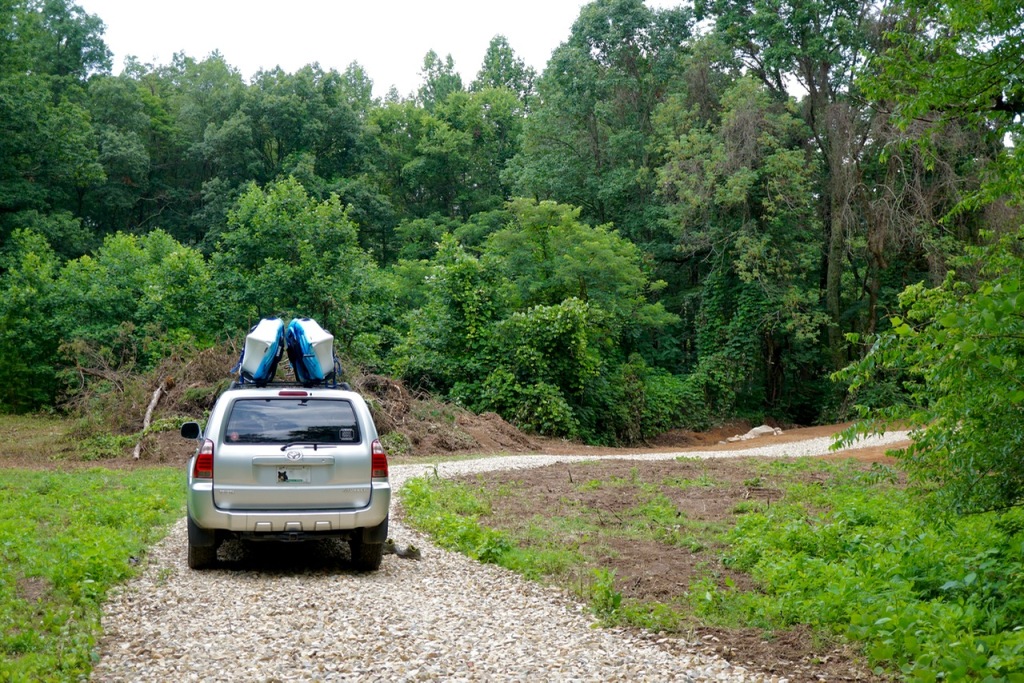
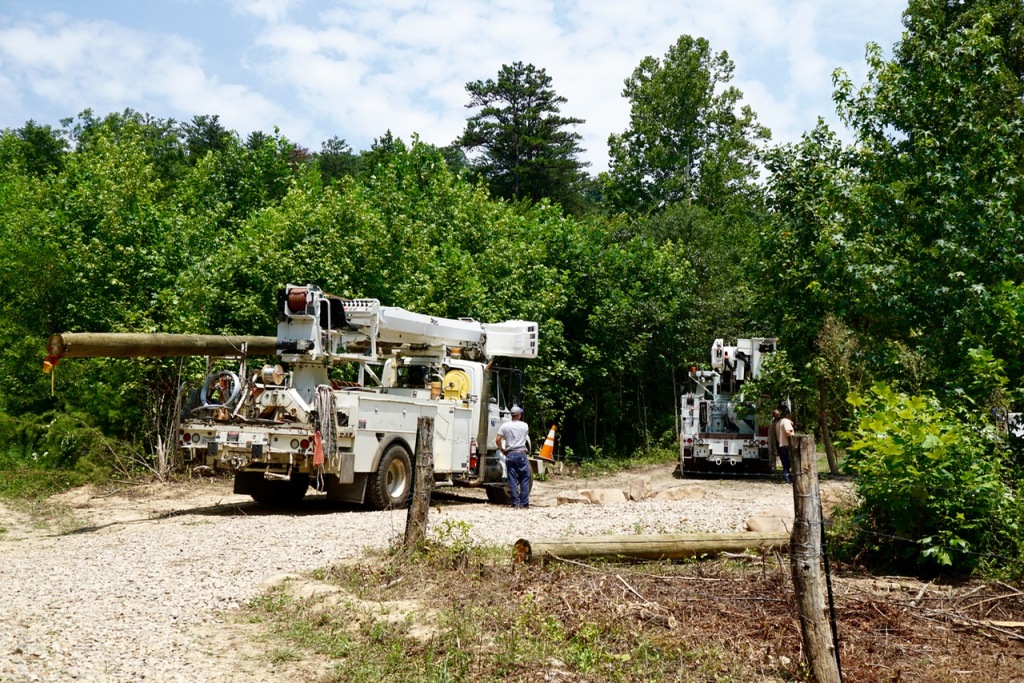

As a rule, projects turned out to be much more expensive and take much longer than anticipated. Progress was so exhausting that we rarely remembered to celebrate it. Every decision felt as confusing as it was important. Every project was grueling and some type of dangerous. Stress, bugs, fatigue, soft-tissue injuries…land ownership was turning out to be nothing like the sunny picture I had in my head.
Flash forward a couple years: grid power, well water, orchard, a 1/4 mile of driveway that has endured mountain storms and cement-truck convoys, and a growing bond with the family on an additional 1/4 mile of shared driveway. Our 2 fields, which on that misty solstice were either a mat of kudzu or a tangle of thorns, were now lush and walkable thanks to Chris’ persistence with mowing and sowing grass and clover seed.

Chris was keeping up with light forestry on the wooded acres, thinning dying pines to help hardwoods thrive. I was relentlessly yanking invasive privet, Amur honeysuckle, and heaven tree saplings to let native plants move back in. Wildflowers and mushrooms began to pop up where we hadn’t seen them before. After the fields recovered, we transitioned to less mowing to provide valuable prairie space for wildlife and pollinators. We bushhogged hiking trails and walked them regularly, building a deeper understanding of the land.
For the first couple years, we were still renting a few miles away, packing water, snacks, and tools into the car to go work on land projects in between our full-time jobs, travel, and social lives. The lack of progress was wearing on us, and when our landlord decided to jack up rent by a hefty percentage overnight, we decided we couldn’t wait for the dome to be completed. We reached out to local contractors about temporary-home options before deciding our best bet was to convert the bare-bones metal polebarn to a dwelling.
The barndominium seemed like a major job to us, but to general contractors, it was too small to consider. So we took it on ourselves. Fortunately we’d built a strong list of contacts over 2 years, and because barnbungalow was small, our favorite subcontractors were happy to take the complicated parts – like electric, plumbing, HVAC – for quick pay, often after hours.





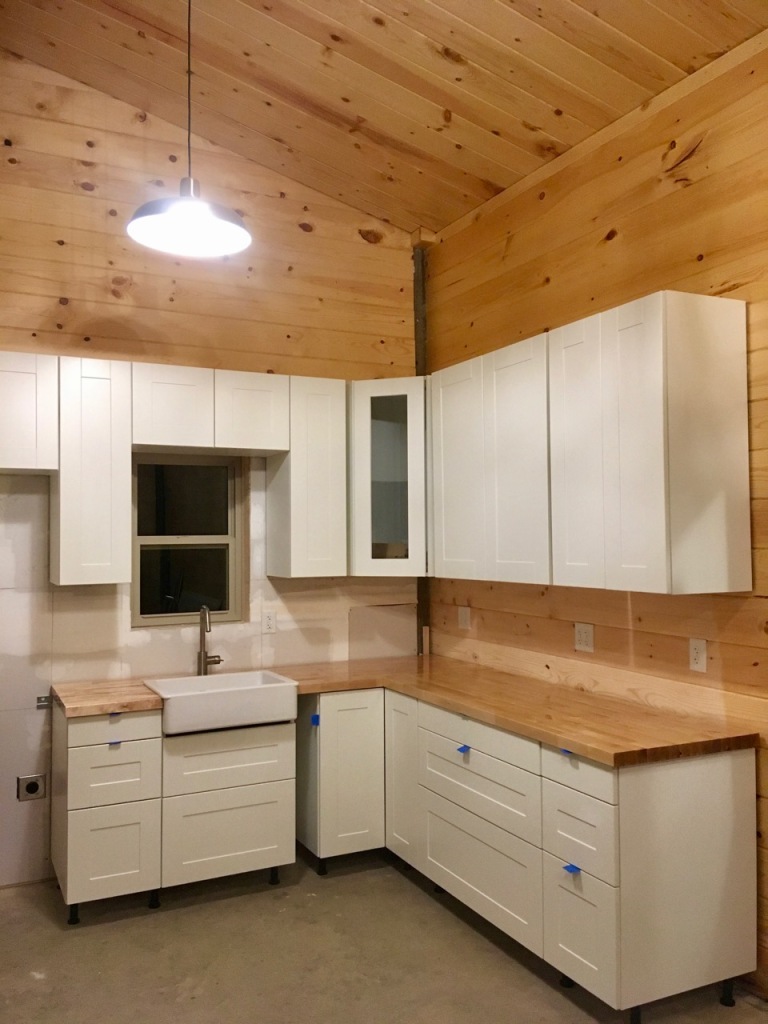
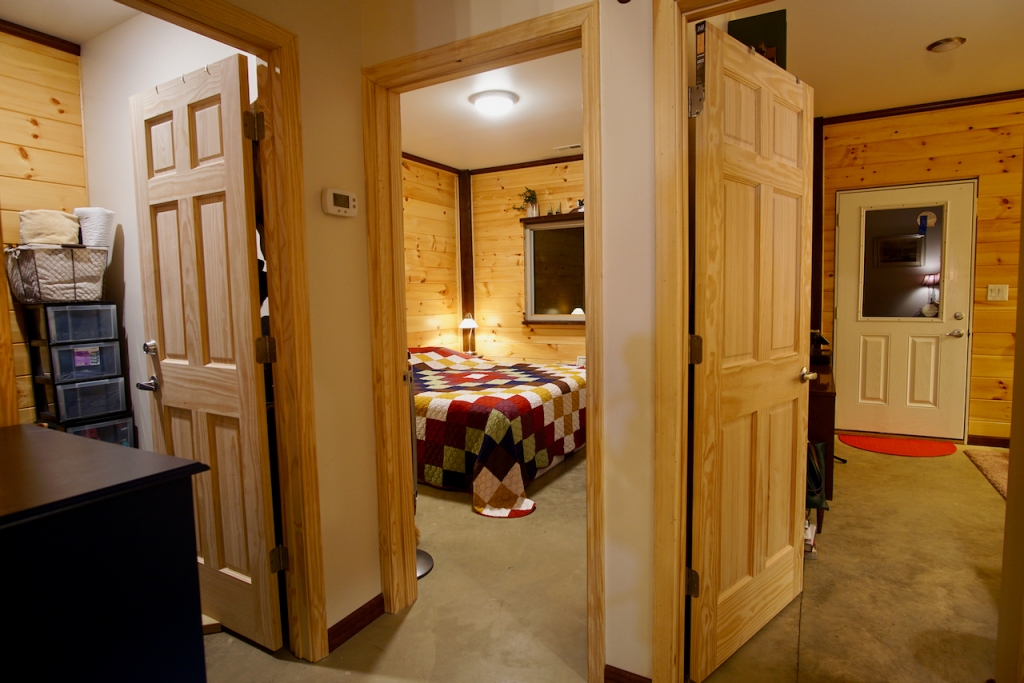
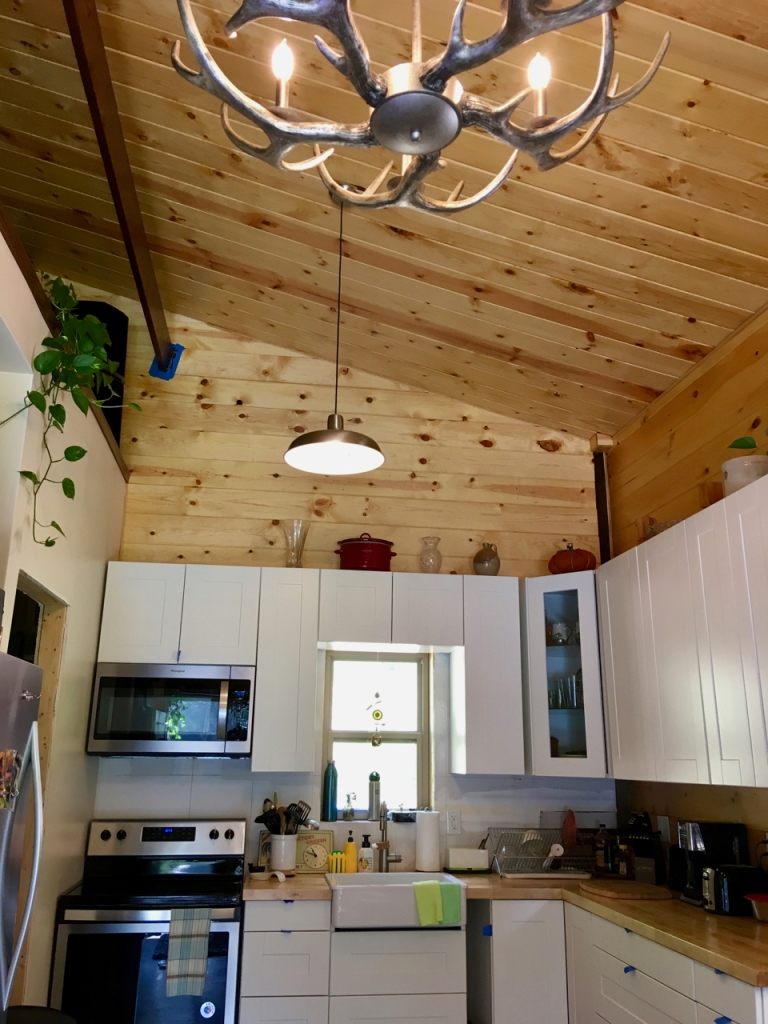

In spring 2019, 6 months after starting the barn conversion, we moved in, kicking off the height of our honeymoon period with the land. Everything was exciting.
It was finally time to “farm up” by adding a couple good guard dogs, gardens, and livestock. In early 2020, we adopted an older brown dog from a shelter. That spring, we came up on a waitlist with a black mouth cur breeder for pick of their latest litter. We brought home our first birds and bees. We spent COVID-19 lockdown gardening, painting bee boxes, playing with baby chickens, and training and walking dogs in our own 20-acre park. With travel limited, neighbors became family.
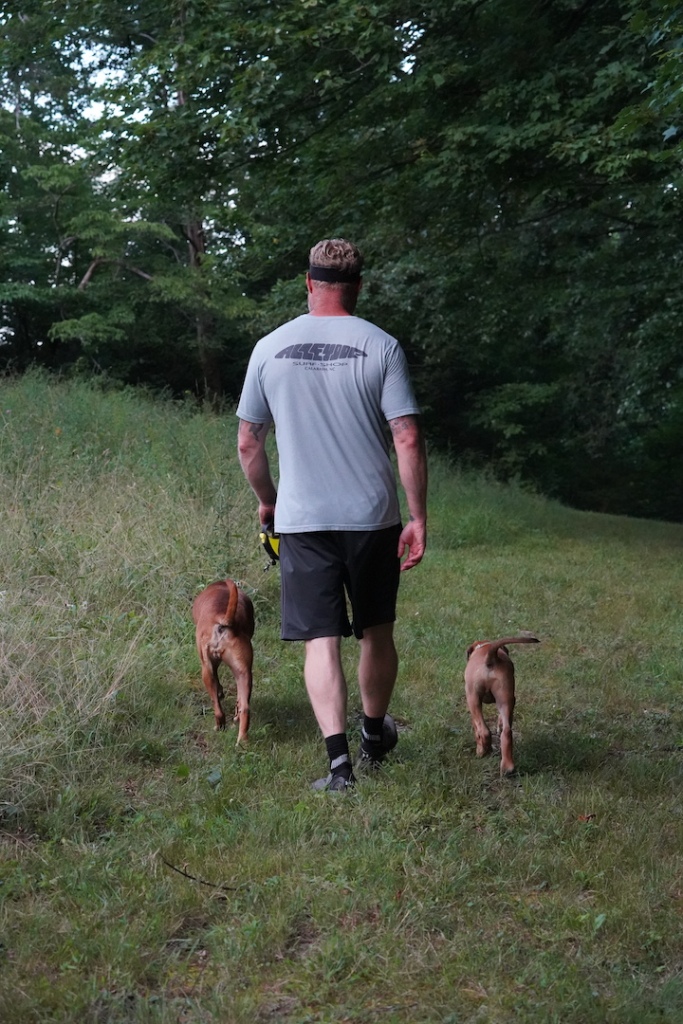


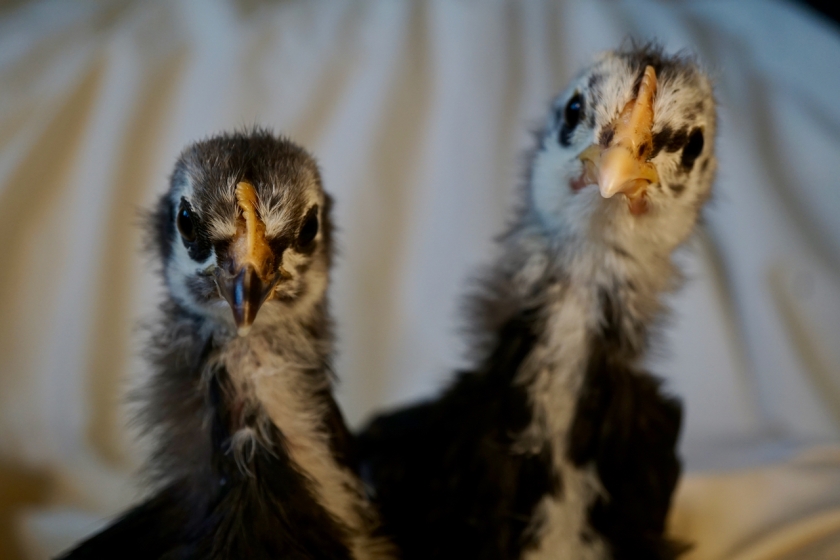

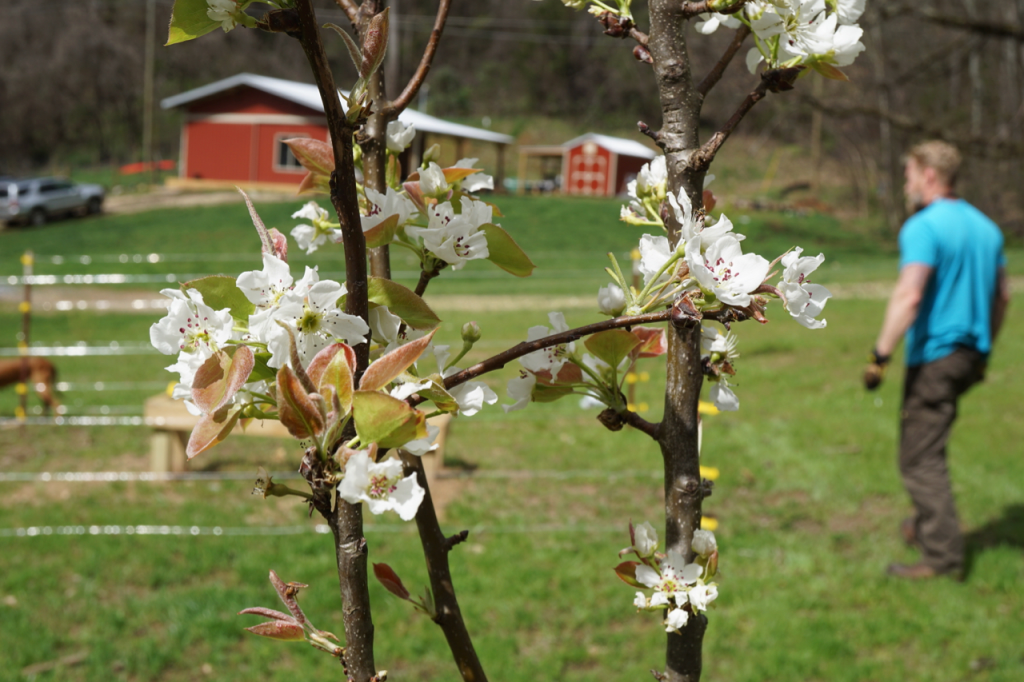

The lifestyle suited us, despite the snakes, trespassers, poison ivy, and storms. Despite the clawing sense of failure on projects that seemed perpetually out of reach, like the dome, or the parade of hefty surprise expenses like a driveway sinkhole.


Despite all the stressors, we felt content. This lifestyle is never boring, and there’s plenty of time outside with built-in opportunities to learn new skills.
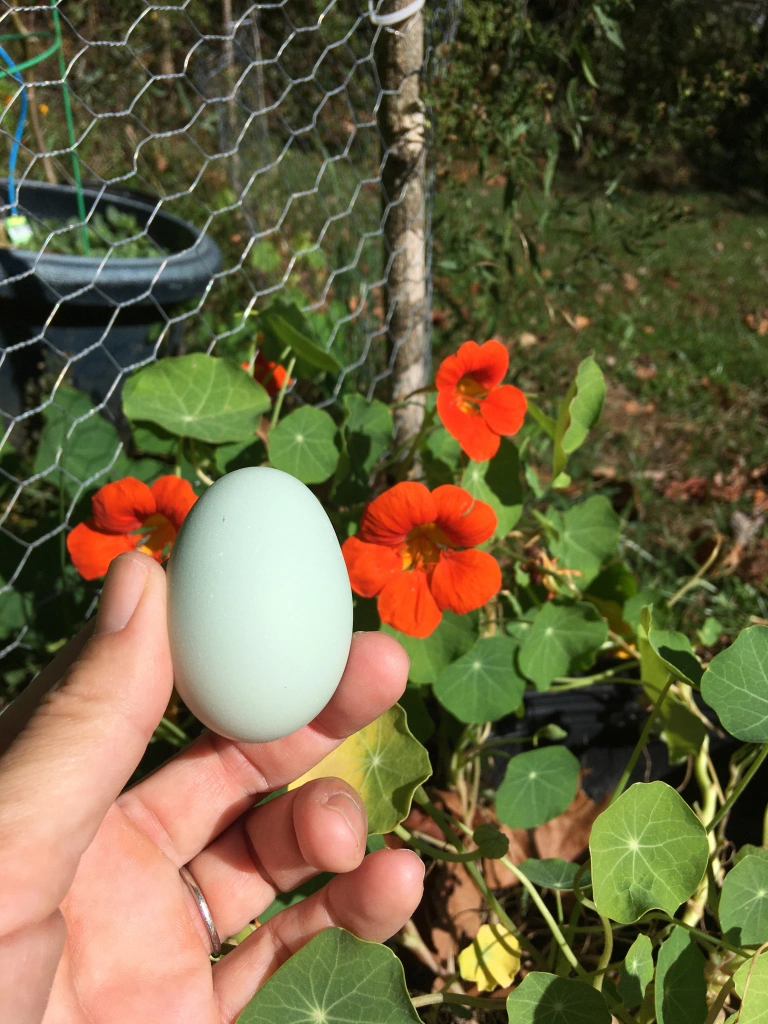
Something changed last year, though. In summer 2022, we had our most disturbing encounter yet with a trespasser brandishing a loaded handgun. The situation ended without injury thanks to Chris’ level head and military training, plus a well-timed alert from our network of cameras. Chris disarmed the trespasser and eventually let him flee into the woods to be apprehended by law enforcement later on. Last heard, he was in a prison drug program to hopefully kick some addictions while serving sentences on numerous charges, most from before he popped up at our place.
Unfortunately, the experience changed how we see the land. We meet a number of trespassers (hence the network of cameras). It’s usually a matter of asking people to move along. We understand that local families wandered and hunted the area for generations before outsiders started buying pieces of it. No harm, no foul, unless a person appears to want to threaten or steal. Life is a lot nicer when we don’t have to be picky about property lines. However, this trespasser brought violence. It changed our tolerance, which is a major shame.
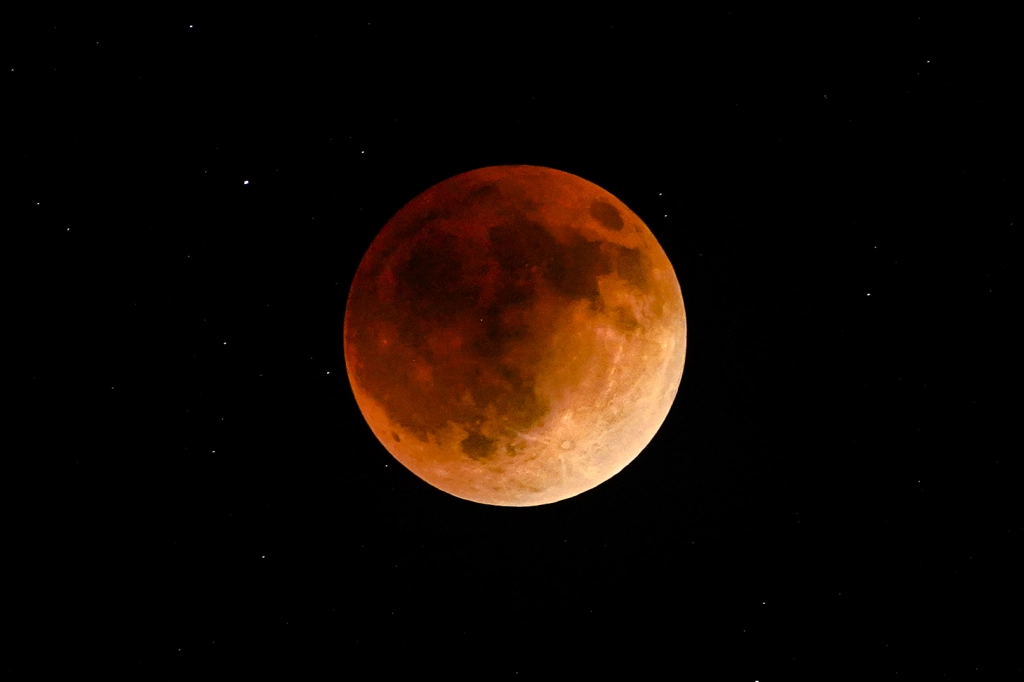
In truth, the honeymoon period between us and the land was winding down before that. The shared driveway, still a source of bonding with the main family we share it with, became a place of conflict for 2 sets of new neighbors, spurring frequent visits by law enforcement. The newbies have reacted badly to the real work and cost of making mountain land human habitable. Both families shelled out pandemic prices for rough acreage before having surveys completed. Not knowing your property boundaries is a dangerous game, and they were immediately thrown into nasty conflict with each other.
They both still seem not to fully grasp how to deal with the difficult land they bought. Their stress has led to bad behavior. One couple hacked a trench into our decades-old shared road bed to lay ill-advised waterlines through others’ property without permission, compromising 5 years of expensive driveway maintenance by us and the other original neighbors.
The other pandemic neighbors are in poverty and constant crisis. They bought land so far from utilities that they can’t afford to go on-grid, nor can they afford to establish permanent housing or a consistent source of water. They’ve been functionally homeless for 2 years, squatting in a camper with no power, water, or plumbing. Life is kicking their butts, and they’ve made it everybody’s problem.
It’s okay to make mistakes out here. It’s unavoidable. What’s not okay is to lash out in anger when it’s time to take accountability and do better. Both sets of pandemic neighbors doubled down on alienating the rest of us. Interestingly, it’s a pattern you hear about all over the region with people who moved here in a rush during the pandemic.
You’d think living so far away from neighbors would make us care less. But even though our nearest neighbors are 1/4 mile away, many feel as close as neighbors back in the city under 50′ away. Beyond sharing the general interests that lead people to live a rural life – gardening, foraging, hiking, etc. – we share a microclimate, the dealings on our country road, and a corner of the power grid. We’re each other’s first responders and security systems; it can take 15 minutes for emergency vehicles to reach us, so being on good terms can truly be life-or-death. As gardeners, we share seeds, tractor attachments, produce, preserves, and recipes. As beekeepers, we share nectar flows, honey bee genetics, and heavy lifting. No kidding: without the help of neighbor beekeepers, we wouldn’t have made it a year with bees.

Besides driveway drama and the epic trespasser, we’ve been worn down by a cycle of price increases and delays on the dome home. The years-long build has had us in a mental tug-a-war between optimism and self doubt for too long. Building an unconventional structure on the side of a mountain is somehow at once the most frustrating and coolest thing we’ve ever done.

The work of settling land – staking a spot in nature, accessing utilities, building shelter – it’s all so much harder and more expensive than you’d think. Somehow Chris and I stayed excited through years of sweaty, buggy, dangerous, discouraging work. At least the honeymoon period was long and let us establish an abundance of memories and rituals that carry us through difficult times.
Out here, we look forward to the seasonal awesomeness of living in nature: the first run of maple sap in January; morels and wildflowers popping up through the leaf litter in springtime like old friends; the bounty of mulberries, wineberries, plums, peaches, and blackberries in early summer; the first pear or fig or fingertip of honey in late summer. We’ll never be tired of watching the trees turn technicolor in fall or racing across the field on sleds in the winter.

In addition to creating honeymoon-period memories, we’ve built friendships. Many of our closest friends in the ZIP Code are within golf-cart range. We share hikes, soul-soothing porch-sits and country drives, kayak trips, bonfires, holidays, homegrown food, and mountain remedies. It’s a marvelous, fulfilling life.
So it’s strange that, as I’ve tried and failed to complete final edits on a virtual stack of posts for this blog, what’s been holding me back is a dark cloud creeping over my writing. There’s a disappointment I don’t want others to feel, especially if you’re dreaming of this type of life. No matter how big a dream we humans reach, we’ll always find ways not to appreciate it, especially after the honeymoon period winds down.
Last summer, a harsh, “be careful what you wish for” phase set in, boomeranging us from years of feeling hopeful and excited to feeling, well, tired. We weren’t sure it was worth being out here anymore.
How Are We Now?
And do we still recommend life in the wilderness? Short answer: Yep.
First, the fatigue passed, and more quickly than expected. The bummer summer boomerang period let up by wintertime. We might even forget about it if I don’t publish this post. We rebounded to a happy place thanks to great neighbors. Over time and through shared meals, game nights, and all kinds of interesting shared projects and outings, friendships buoyed us out of a spiral of negative emotions around homesteading in east Tennessee.
Another balm for our weary brains was to get busy with land improvements again, like a greenhouse and waterlines for a new garden and fire pit. We brought power to the chickenyard to run little heaters and make winter easier on the birds.

Nature has been kinder, too. We’ve had over a year of mercifully mild weather, with low wind and less torrential storms. The first nearly normal rainy season in 3 years beat back a drought. Thanks to all the drainage we’ve established, we can sit back and enjoy the rain without worrying about mud, a near miracle on a homestead.
The dome build is progressing and turning out better than we hoped, a wind- and fire-resistant marvel rising gracefully from the corner of a hidden field in the smokies. The wood from the “view” oak we milled for the dome’s custom staircase is in climate-controlled storage after a year of drying and a few months in a kiln over in North Carolina. It came through with minimal checking/cracking and will be a treasured feature of the dome’s interior. The expanded view from the dome after we took that awesome oak is also awesome.

From the profound friendships to the host of survival skills we’ve accidentally mastered, we’re more connected than ever to the world. It’s true we’ll never have the honeymoon period back. At least it lasted 5 glorious years. In its place? Appreciation, understanding, awesome friends. And a few more security cameras.


That is an amazing story. Love your grit and determination. You need to be interviewed on some of the homesteader podcasts or youtube channels. There are lots who need to hear your inspirational story of trials and struggles and what it is like to come out on the other side more determined in doing what you set out to do. Never give up. Thank you for sharing!
LikeLiked by 2 people
Thank you, Carla!
LikeLiked by 1 person
Beautifully written! Hard to believe it has been seven years already.
LikeLiked by 1 person
I somehow missed seeing this wonderfully written and descriptive article, mentioning good an bad times and how to conquer them all. I am so impressed with it all and love to follow your writings.
LikeLike